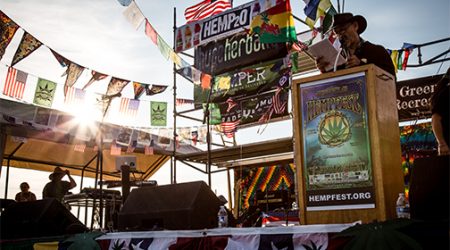Published 9 years ago
The Marijuana Revolution – Dr. Sanjay Gupta Reports
Here are CNN’s Special Reports (also see “WEED” at: https://www.youtube.com/watch?v=hrVXR… and “WEED 2” at:https://www.youtube.com/watch?v=i2qFD…) by Dr. Sanjay Gupta showing the clear proven medical benefits of both high CBD (for seizure disorders) and high THC (for PTSD and pain relief) marijuana and why marijuana should not be classified as a Schedule 1 Controlled Substance by the U.S. Federal Government.
Here is an informative article about a new Senate bill to end the Federal War on Weed:
http://www.huffingtonpost.com/2015/03…
Marijuana should be immediately rescheduled to Schedule 3. Marijuana is less harmful than heroin, cocaine and crystal meth, with accepted medical uses in the United States, moderate potential for physical dependency in some populations and high potential for psychological dependency in some populations.
Given the need for establishing a consensus with social conservatives, Schedule 3 is the most conservative scheduling that is honest and truthful for now, although we may choose to revisit this issue again at a later date after the science is in and we know more about the issues of dependency from a large scale scientific perspective. We need to do this now on a bipartisan basis. It’s about OPENNESS and TRANSPARENCY in government. We need to be told the truth and not be lied to by our government. Schedule 1 is official state propaganda hard coded into the law of the land. It’s insane. It is a glaring example of official abuse of power, given what we know today.
Both Congress and the Executive Branch (e.g., U.S. Attorney General) have the authority to reschedule marijuana. It can be an Act of Congress or an act of an official in the Executive Branch.
Drug scheduling is a multiple choice with five options. The question is, “Which schedule most correctly and accurately and truthfully describes marijuana according to all available scientific evidence and medical research?” Some answers are more correct and truthful than others, as can be attested to by scientists, academics, doctors, nurses and other health care professionals. Schedule 1 is the wrong answer, based on the evidence presented in the three CNN videos above. Since it has a variety of scientifically proven medical uses and it has been proven to be safe under medical supervision, Schedule 1 is patently untruthful with respect to marijuana and there is a growing political consensus on that point.
Keep in mind that heroin is a Schedule 1 drug and cocaine and crystal meth are Schedule 2 drugs. Marijuana is less addictive and dangerous than all three of these drugs and it currently has accepted medical uses in the United States. Abuse doesn’t lead to “severe” dependence in the great majority of the population. So what’s the best answer? Schedule 3, of course. Marijuana is safe medicine for most. However, it can be contraindicated for some populations. For the vast majority of people, it’s safe. For those predisposed to psychotic disorders, however, good luck and godspeed. We should treat it as a mental health care issue for those specific populations.
(1) Schedule I. (A) The drug or other substance has a high potential for abuse. (B) The drug or other substance has no currently accepted medical use in treatment in the United States. (C) There is a lack of accepted safety for use of the drug or other substance under medical supervision.
(2) Schedule II. (A) The drug or other substance has a high potential for abuse. (B) The drug or other substance has a currently accepted medical use in treatment in the United States or a currently accepted medical use with severe restrictions. (C) Abuse of the drug or other substances may lead to severe psychological or physical dependence.
*(3) Schedule III. (A) The drug or other substance has a potential for abuse less than the drugs or other substances in schedules I and II. (B) The drug or other substance has a currently accepted medical use in treatment in the United States. (C) Abuse of the drug or other substance may lead to moderate or low physical dependence or high psychological dependence.
(4) Schedule IV. (A) The drug or other substance has a low potential for abuse relative to the drugs or other substances in schedule III (B) The drug or other substance has a currently accepted medical use in treatment in the United States. (C) Abuse of the drug or other substance may lead to limited physical dependence or psychological dependence relative to the drugs or other substances in schedule III.
(5) Schedule V. (A) The drug or other substance has a low potential for abuse relative to the drugs or other substances in schedule IV. (B) The drug or other substance has a currently accepted medical use in treatment in the United States. (C) Abuse of the drug or other substance may lead to limited physical dependence or psychological dependence relative to the drugs or other substances in schedule IV.




